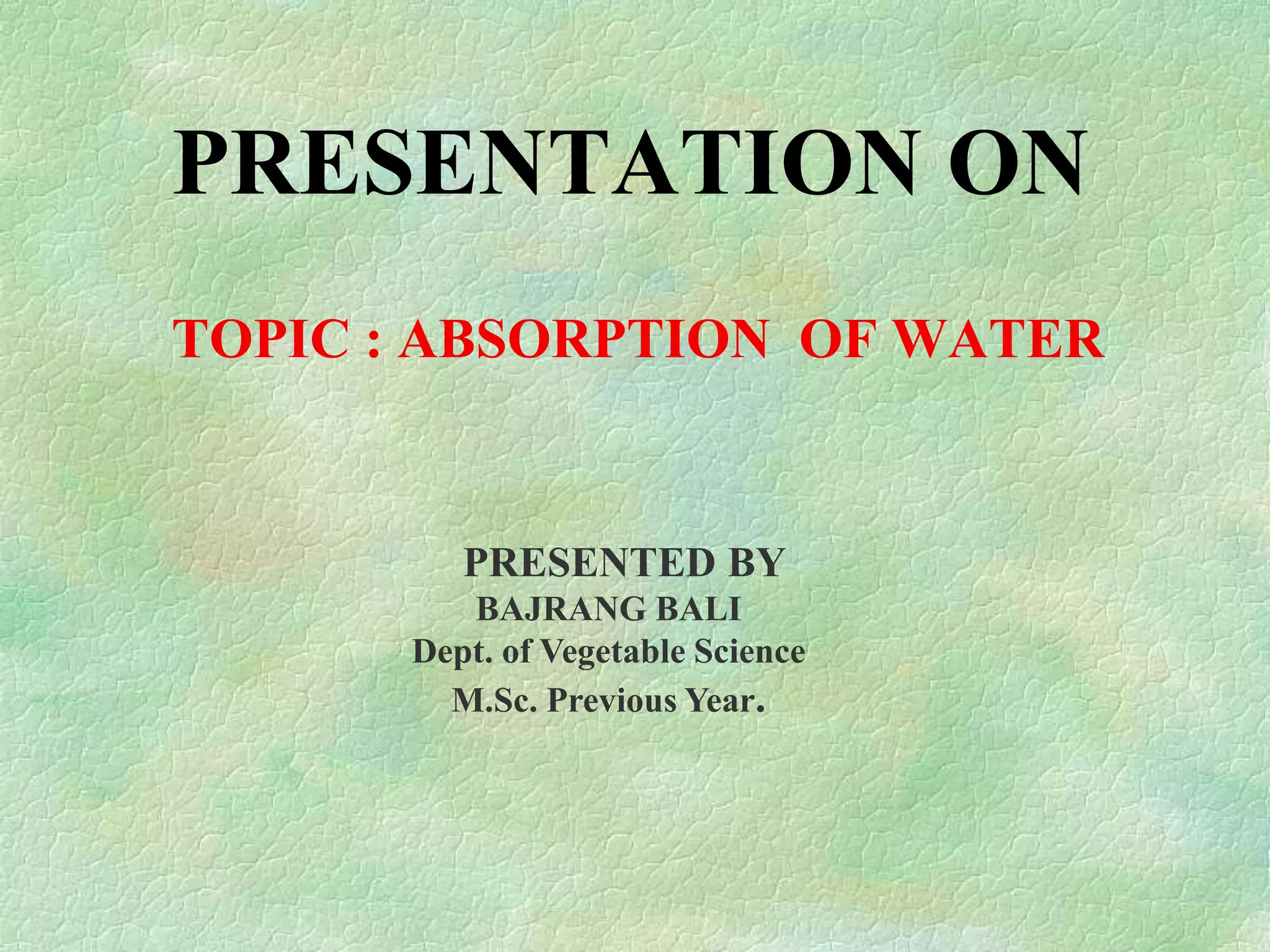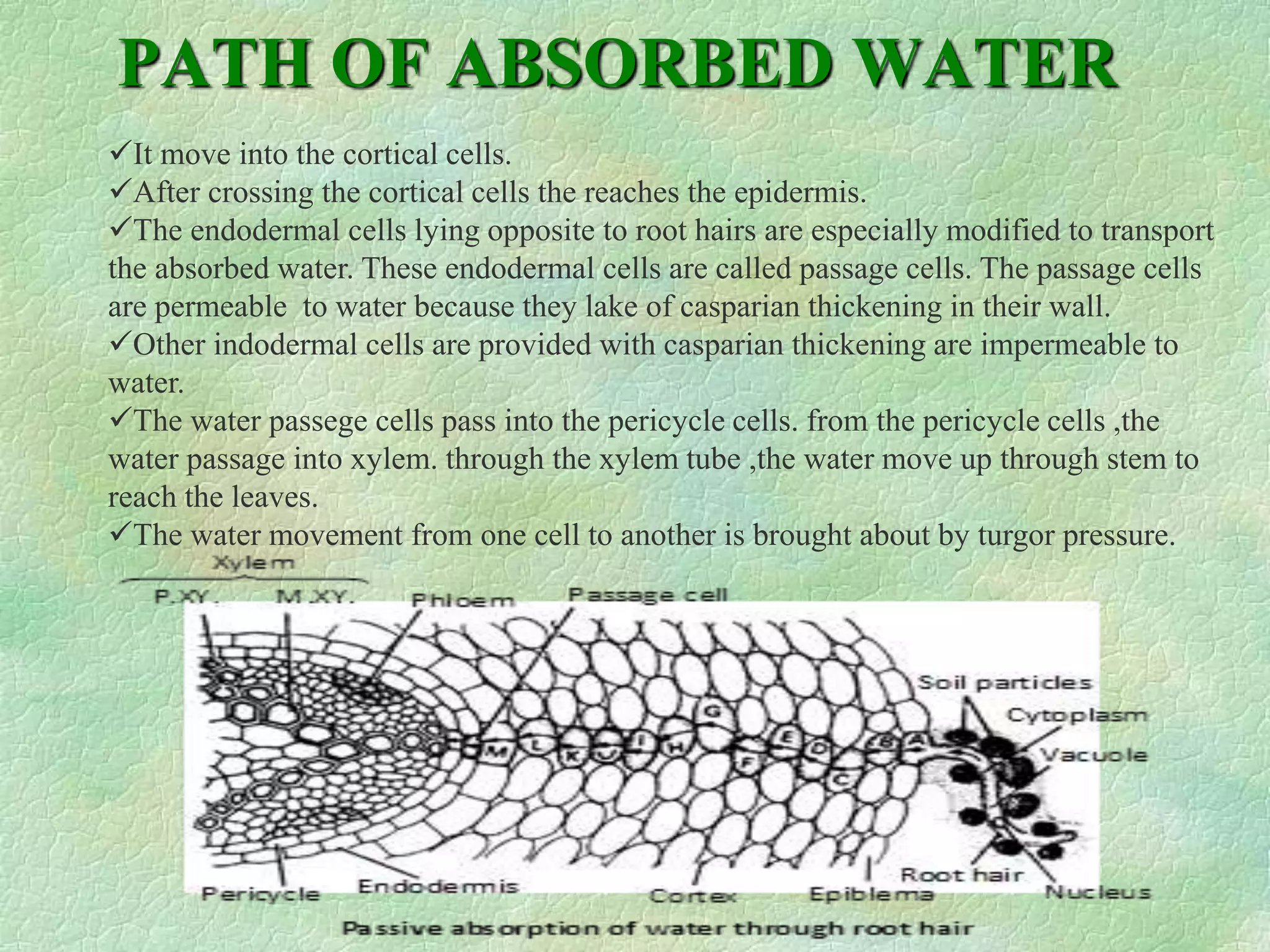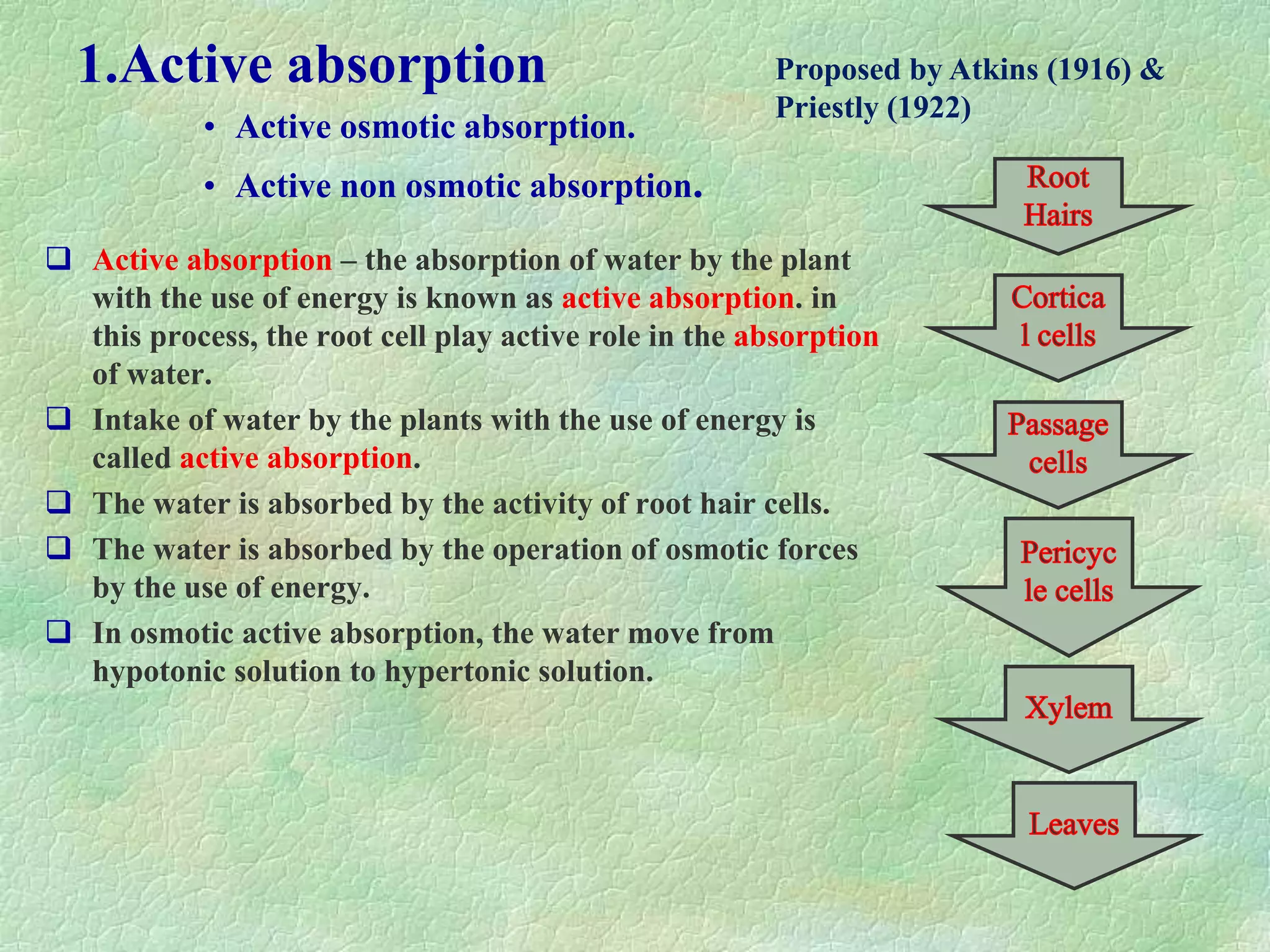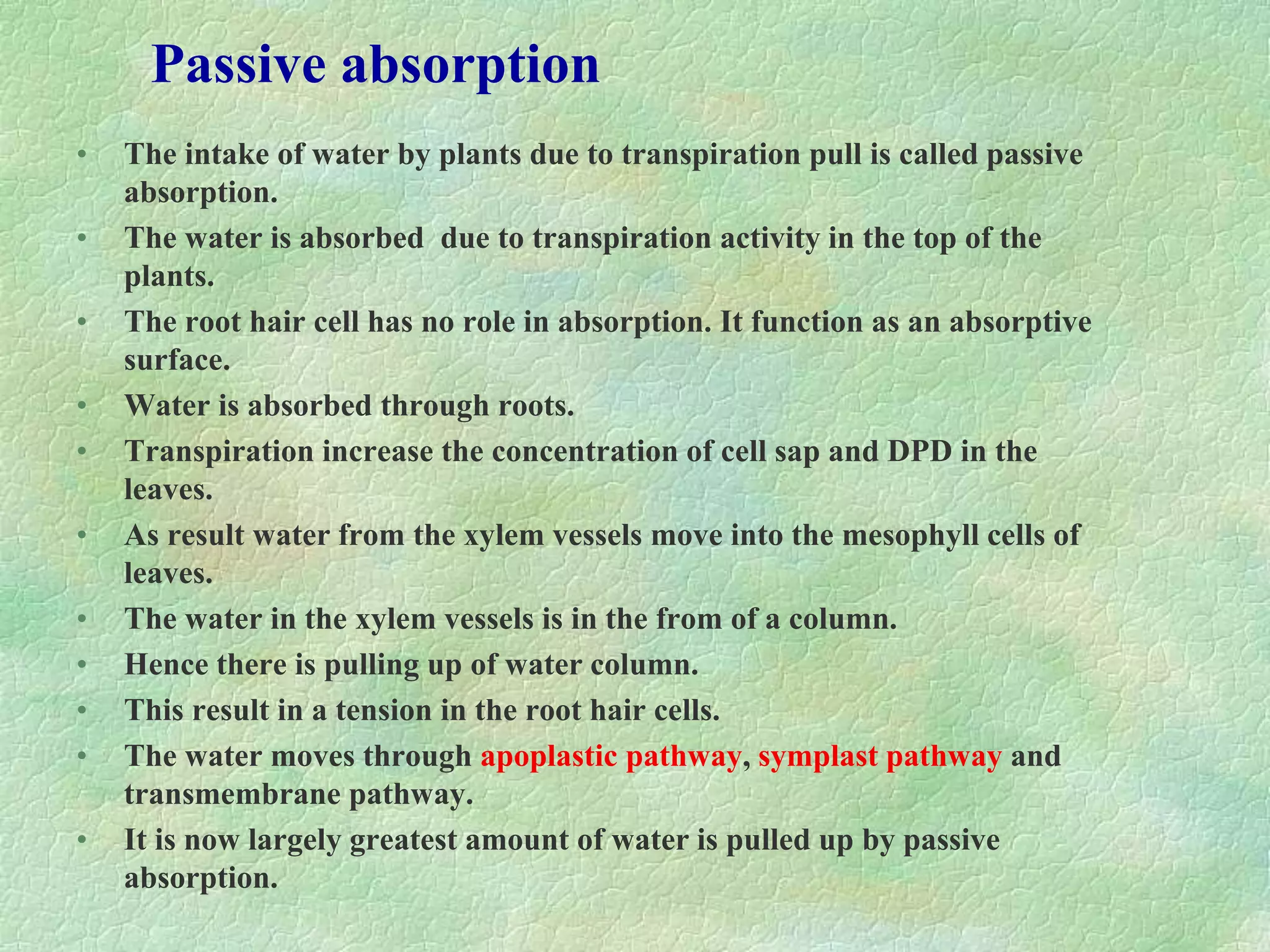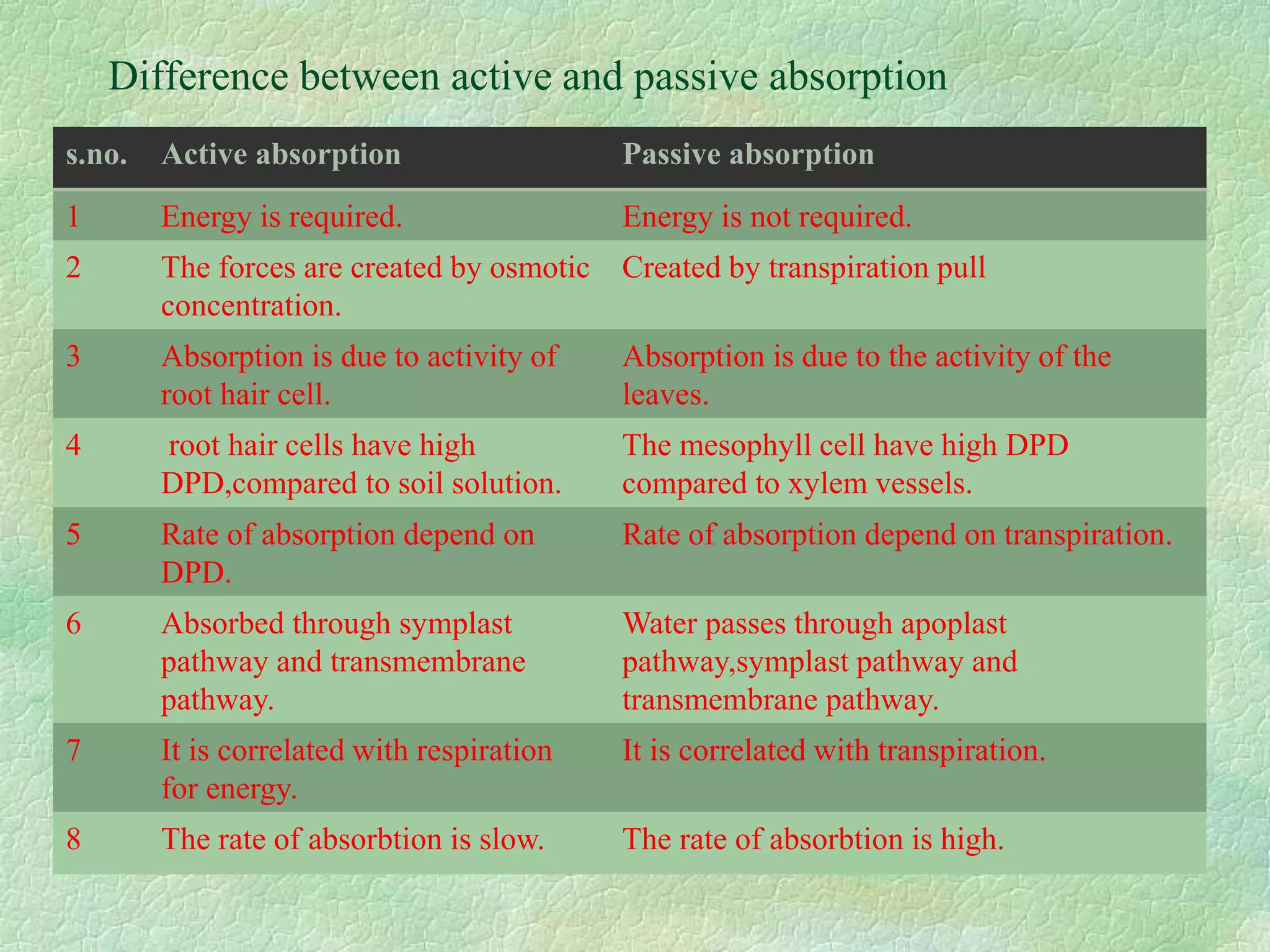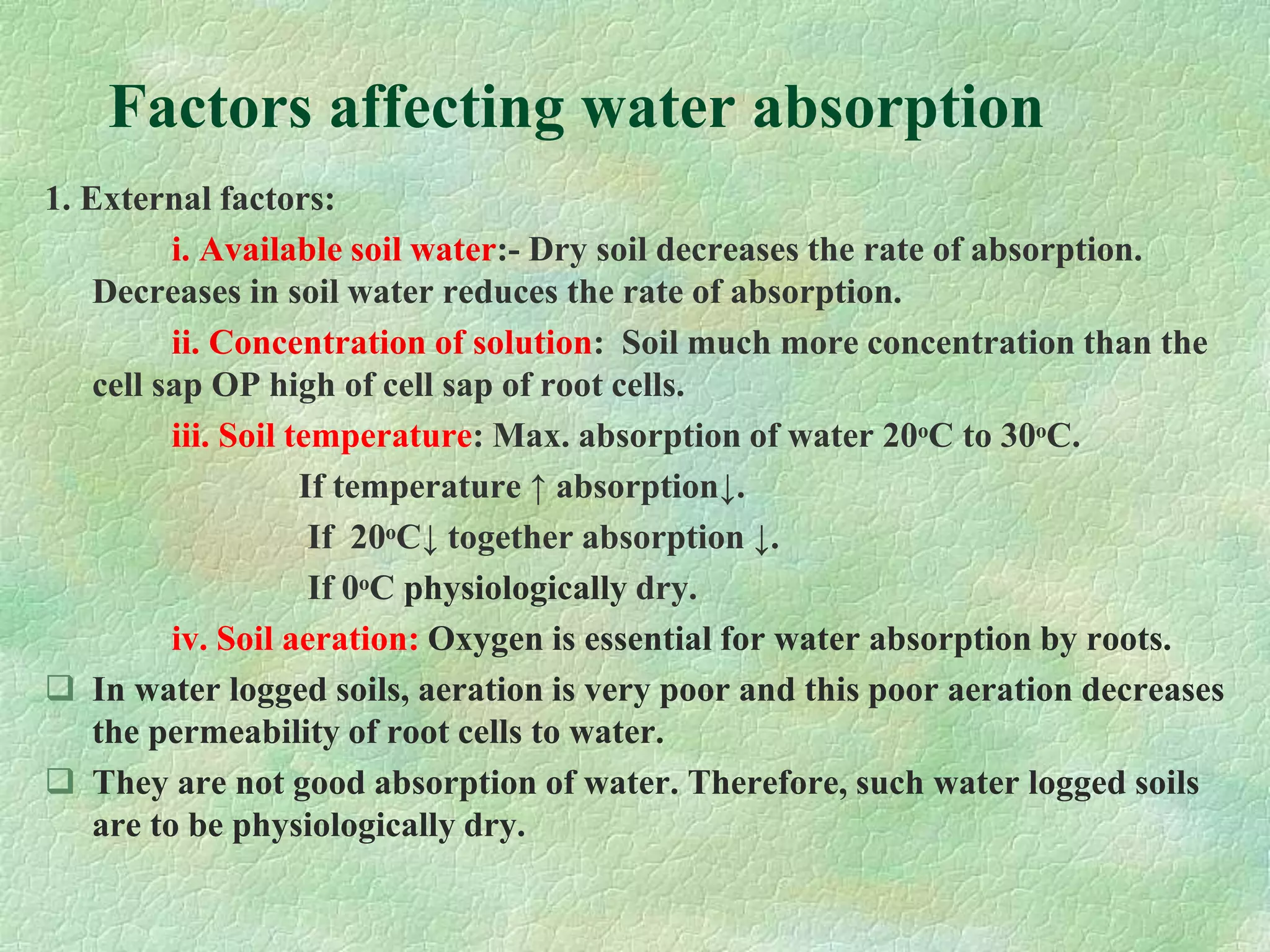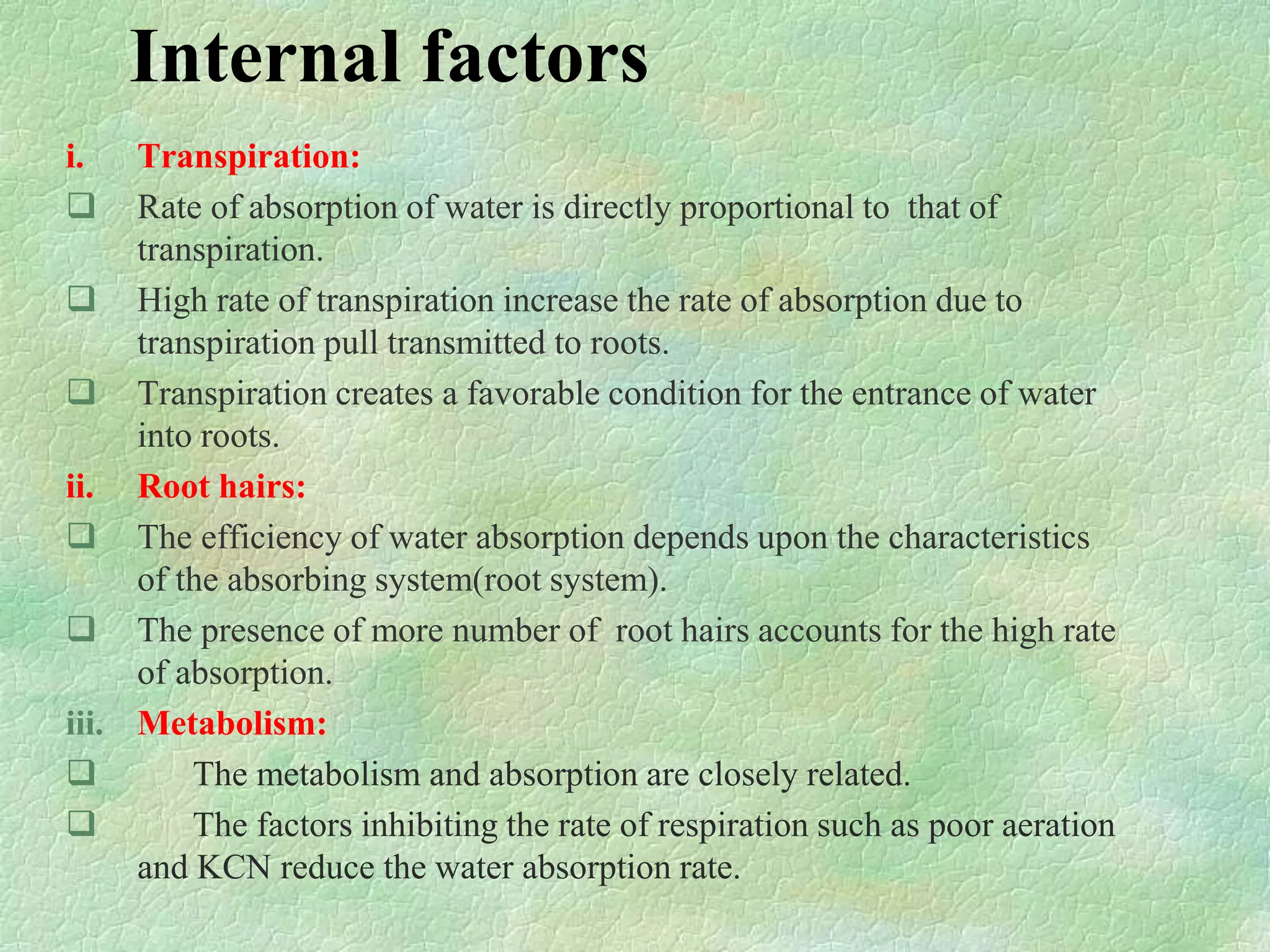Bajrang Bali presented on the absorption of water by plants. Water is absorbed through the root hairs located in the root hair zone and transported throughout the plant. Water can be absorbed actively, using energy from respiration, or passively through transpiration pull. Active absorption involves osmotic forces or can be non-osmotic, while passive absorption relies solely on transpiration. Factors like soil water availability, temperature, aeration, transpiration rate, and root morphology affect the absorption of water. Aquaporin proteins in cell membranes aid the transport of water molecules across plant cells.
